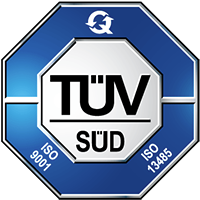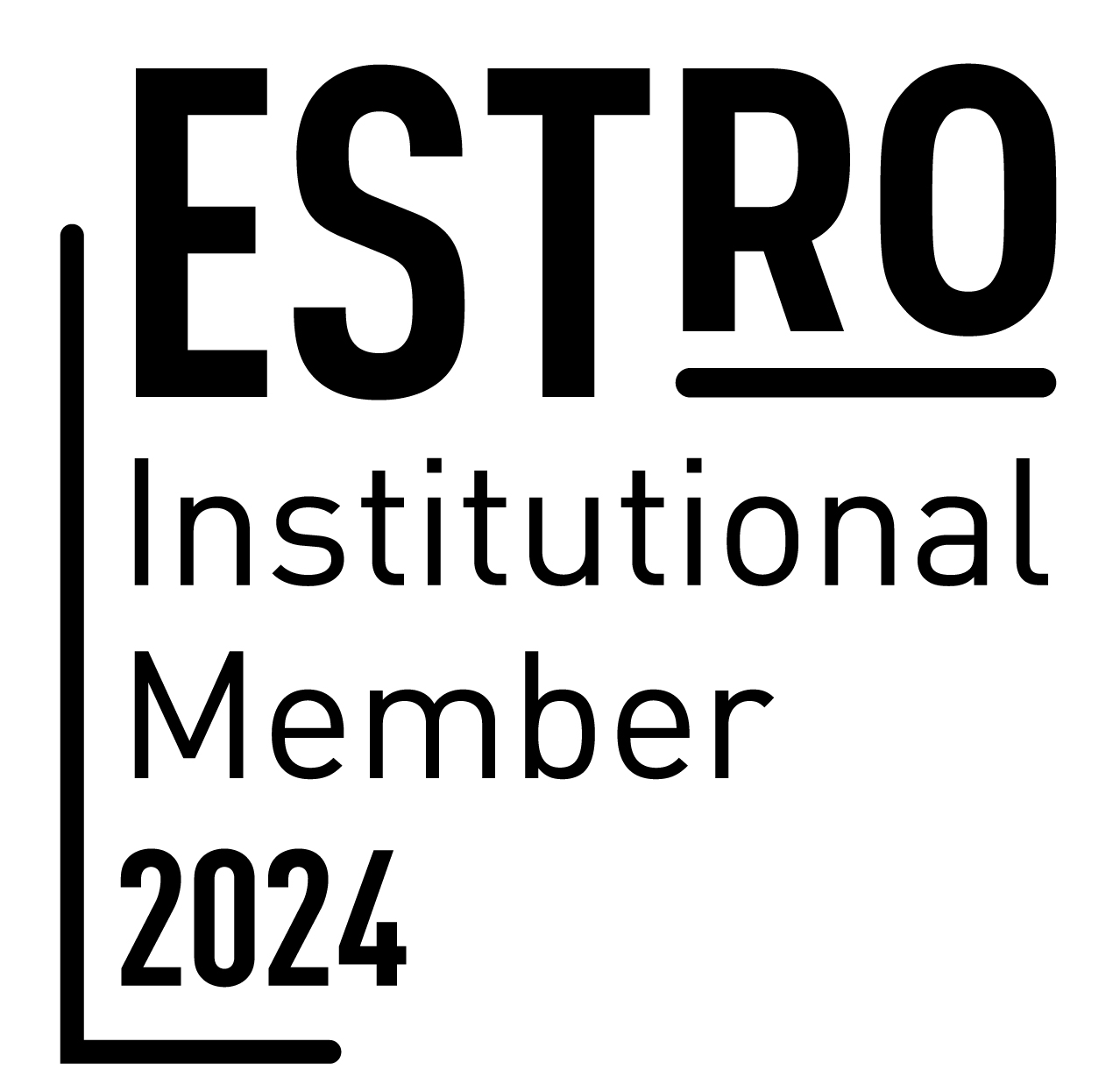Tesi di laurea
Tesi di laurea
13 ott/25
Crystal-assisted beam extraction for Hadrontherapy synchrotrons
ABSTRACT
Bent crystals are currently used for beam manipulation in synchrotrons for high-energy physics - e.g. for slow beam extraction at the U-70 accelerator at IHEP (Protvino, Russia) or for beam shadowing at the SPS accelerator at CERN (Switzerland) or for beam collimation at the LHC at CERN. In fact, if properly aligned, bent crystals are capable of bending beams by angles currently unreachable by any magnet techology presently available.
Bent crystals can represent a valuable way to extract treatment beams from hadrontherapy synchrotrons, alternative to schemes used by machines currently in operation, since they allow to relax strong contraints on machine optics. In order to propose a crystal-assisted extraction scheme, the performance of bent crystals should be assessed: to date, no data is available in literature. The CREMA collaboration has been set up by INFN in order to overcome the lack of information.
The aim of the activity is to characterise the measurement set up presently available at CNAO for assessing the performance of bent crystals at beam energies of interest for hadrontherapy. The activity will mainly consist of Monte Carlo simulations, to be carried out with the FLUKA code. The activity will be complemented by proposing a possible crystal-assisted extraction scheme for hadrontherapy synchrotrons like that of CNAO.
The activity will be carried out in the framework of the CREMA collaboration.
FURTHER INFO
Expected duration of activity (including thesis write-up): 12 months
Preferred technical skills: knowledge of programming (one among python, MatLab, C/C++, Fortran, etc...)
Most suited curriculum studiorum of the candidate: physics, nuclear engineering
Required soft skills: attitude to problem solving, will to take initiative, eagerness to learn, openness to discussions
References: alessio.mereghetti@cnao.it, marco.pullia@cnao.it
Scattering footprint on beam phase space introduced by the PEPITEs monitor in CNAO accelerator beam lines
ABSTRACT
The PEPITEs monitor is a beam profile monitor developed by IN2P3 to measure in-vacuum beam profiles. It is characterised by a very low material budget, minimising the beam Multiple Coulomb Scattering (MCS) and allowing the deployment of the monitor in beam lines for hadrontherapy, like those of CNAO.
The aim of the activity is to characterise the beam MCS due to the PEPITEs monitor and the distortion thus introduced on the beam phase space at various positions along the CNAO accelerator beam lines. The activity will be carried out by means of the Monte Carlo simulations using the FLUKA code.
FURTHER INFO
Expected duration of activity (including thesis write-up): 12 months
Preferred technical skills: knowledge of programming (one among python, MatLab, C/C++, Fortran, etc...)
Most suited curriculum studiorum of the candidate: physics, nuclear engineering
Required soft skills: attitude to problem solving, will to take initiative, eagerness to learn, openness to discussions
References: alessio.mereghetti@cnao.it, marco.pullia@cnao.it
Magnetic design of a novel scanning magnet for hadron therapy
ABSTRACT
The European Superconducting Ion Gantry (EuroSIG) project, a collaborative effort between CNAO, CERN, INFN, and MedAustron, is dedicated to the design and construction of a novel gantry for hadron therapy. A key component of this project is the downstream scanning system, which incorporates the innovative Rake magnet concept, recently patented by CNAO.
While a baseline design of a first Rake demonstrator is now under construction at CERN, several features of this new concept could be further explored and optimized.
In this thesis, the student will learn the basics of accelerator magnet design and how to use FEM electromagnetic software (e.g. OPERA) to perform simulations. He/she will use Python codes to optimize the magnet and explore novel and exotic configurations. Finally, it is asked to provide support during the prototyping phase.
We are looking for a fresh, curious, and motivated mind to explore the boundaries and push the limits of the Rake concept!
FURTHER INFO
Preferred technical skills: basic knowledge of coding (Python and/or Matlab)
Most suited curriculum studiorum of the candidate: physics, nuclear/electrical engineering
References: enrico.felcini@cnao.it, marco.pullia@cnao.it
Simulation and Benchmarking of Multicellular Tumor Spheroid Growth with Extensions to Model Ionizing Radiation Effects
ABSTRACT
The modeling of 3D multicellular tumor spheroids (MCTS) provides a more accurate representation of real cell-cell interactions compared to traditional 2D models. This project aims to replicate and modernize an existing agent-based Monte Carlo model for MCTS growth (DOI: 10.1016/j.jcp.2017.07.036, DOI: 10.1016/j.jcp.2020.109035) originally implemented in FORTRAN, using Python and modern programming practices. The renewed model will then be extended to incorporate the effects of ionizing radiation, including photons, protons, and carbon ions. The activity will involve collaboration with CNAO and guidance from a medical physicist with coding expertise.
FURTHER INFO
Expected duration of activity (including thesis write-up): 9-12 months;
Preferred technical skills: basic knowledge of coding (Python);
Most suited curriculum studiorum of the candidate: physics, medical physics, biomedical engineering, nuclear engineering;
Required soft skills: problem-solving skills, initiative, eagerness to learn, openness to collaboration and discussions.
Contacts: giuseppe.magro@cnao.it
Development of a Workflow for Patient-Specific Quality Assurance Using Machine Log Files and Dose Recalculation Tools
ABSTRACT
Patient-specific quality assurance (QA) is a critical step in ensuring the safety and accuracy of radiotherapy treatments. This project aims to develop a workflow that integrates a graphical user interface (GUI) and analysis tools to process machine log files for clinical proton plans. These log files will be imported into a commercial dose recalculation system to verify treatment accuracy. The workflow will include steps for extracting and interpreting relevant data, converting it to compatible formats (e.g., DICOM), and performing dose comparisons to validate treatment plans. The activity will involve designing a modular and user-friendly system to streamline QA procedures, leveraging Python and/or Matlab for implementation.
FURTHER INFO
Expected duration of activity (including thesis write-up): 12 months;
Preferred technical skills: knowledge of Python and/or Matlab, familiarity with the DICOM standard;
Most suited curriculum studiorum of the candidate: physics, medical physics, biomedical engineering, computer engineering;
Required soft skills: problem-solving skills, strong analytical mindset, eagerness to learn, ability to work in multidisciplinary teams;
Contact: giuseppe.magro@cnao.it
Development and Validation of Complexity Metrics for Light Ion Beam Therapy Plans
ABSTRACT
Plan complexity is a key factor in the robustness, deliverability, and quality assurance (QA) of light ion beam therapy. This project aims to develop and validate quantitative metrics that describe the structural and modulation characteristics of treatment plans, such as spot distribution, fluence heterogeneity, and intensity modulation strength. The study will involve implementing a computational framework to extract and compute these metrics directly from planning data, applying them to retrospective patient cohorts, and analyzing their correlation with QA and robustness indicators. The ultimate goal is to assess the feasibility of using complexity metrics as predictors of plan robustness, potentially reducing the need for time-consuming scenario-based recalculations. The activity will also explore data-driven modeling approaches and the development of a user-friendly prototype for clinical integration.
FURTHER INFO
Expected duration of activity (including thesis write-up): 9-12 months;
Preferred technical skills: Python programming; data analysis; basic knowledge of medical physics and radiotherapy planning. Exposure to data-driven or modeling approaches could be an advantage;
Most suited curriculum studiorum of the candidate: physics, medical physics, biomedical engineering, nuclear engineering;
Required soft skills: problem-solving attitude, initiative, eagerness to learn, openness to collaboration and interdisciplinary discussion.
Contact: giuseppe.magro@cnao.it
Characterisation of RFKO and Betatron Core Driven Extraction Schemes of the CNAO Synchrotron
ABSTRACT
The National Center for Oncological Hadrontherapy (CNAO, Pavia) is one of the four cancer treatment facilities in Europe delivering proton and carbon ion beams for cancer treatment.
The CNAO synchrotron is the key machine for producing the treatment beams.
The mechanism of extraction of the beam from the synchrotron is based on a third-order resonance, where beam particles are made unstable by an active element.
At CNAO, the two beam excitation mechanisms for slow extraction used worlwide in similar installations, i.e. the betatron-core and the Radio Frequency Knock-Out (RFKO), are presently available: while the former is the historical beam extraction exiter, the latter is presently deployed clinically.
The thesis activity consists of simulating the beam extraction driven by either mechanisms with the aim of optimising key parameters, like frequency and strength of the driving kicker for the RFKO.
The simulations will be performed with XSuite, a top-quality code for single particle beam dynamics developed at CERN.
If possible with the existing hardware and without hindering the treatment schedule, dedicated tests of the simulated procedures with beam could be foreseen.
FURTHER INFO
Expected duration of activity (including thesis write-up): 12 months
Preferred technical skills: fundamentals of accelerator physics, fundamentals of mechanical statistics, basic knowledge of coding (python, C/C++, Fortran) and Linux system
Most suited curriculum studiorum of the candidate: physics, nuclear engineering
Required soft skills: attitude to problem solving, will to take initiative, eagerness to learn, openness to discussions.
References: alessio.mereghetti@cnao.it, marco.pullia@cnao.it













